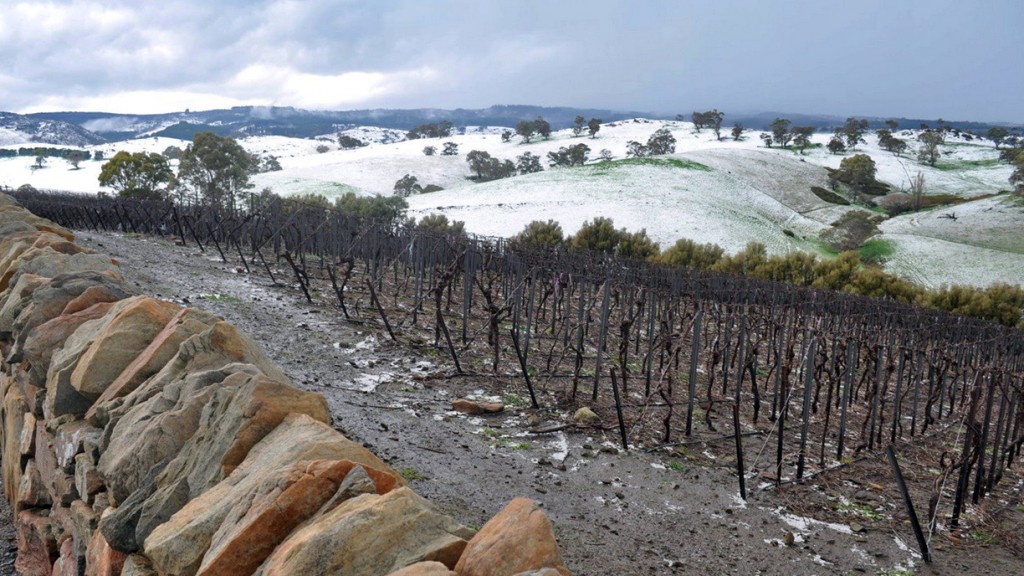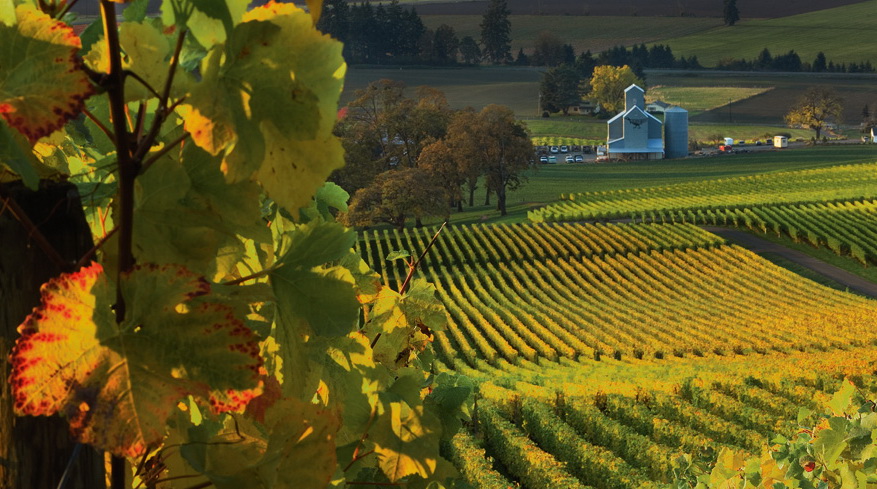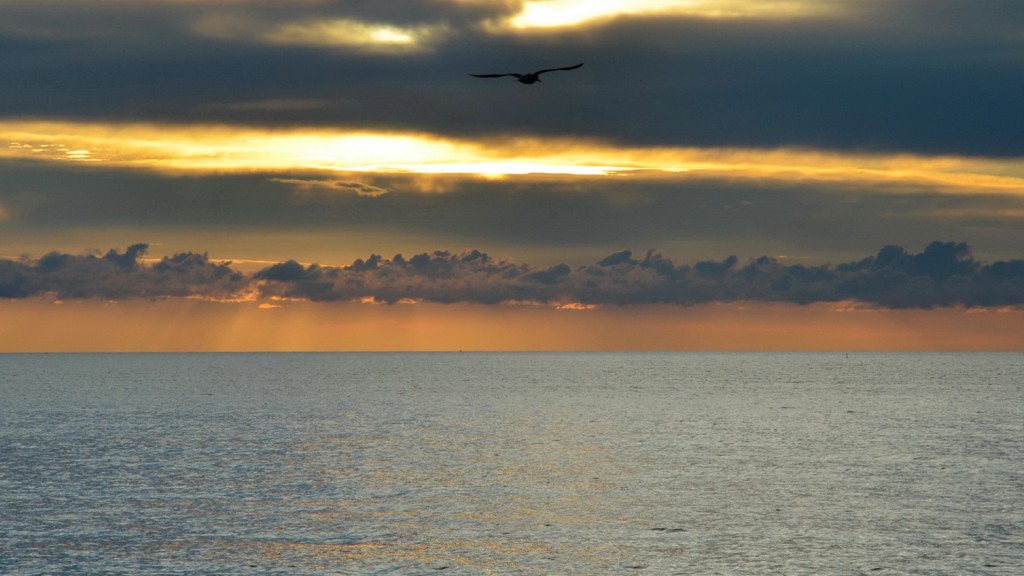It needs the Defiance of Guaranteed Success, says Wine Spectator
‘You know what really makes a wine fine?’ asks Matt Kamer in Wine Spectator, and answers: ‘The root is: It’s not a sure thing.’ He adds that he has long seen ‘finesse and nuance and harmony, along with layers and even a sense of surprise (never mind somewhereness),’ and complexity and originality, as elements that make a wine ‘fine’.
Somewhereness? Yes, it seems Matt is fond of inventing words. Anyhow, he argues that these qualities are the results, rather than the source which is wine ‘not being a sure thing. Fine wine comes from a defiance of guaranteed success,’ he explains, and insists that this is true everywhere in the world regardless of grape variety or region.

No, he’s not talking about the need for the vines to struggle to produce ripe grapes in mean soils and marginal weather as they do in the Steingarten vineyard above. Yes there’s some truth to this old notion, he concedes but says ‘it all comes down to the same goal of slowly teased-out flavor ripeness without a corresponding loss of refreshing natural acidity. This is not, of course, as easily achieved as it sounds.’
I apologise for the convoluted beginning. Sadly the first half of Matt’s post resembles a vineyard that hasn’t been pruned for years. ‘Wine journalism has always consisted of pages and pages of near witless prose masquerading as insight or useful information,’ the Hosemaster of Wine Ron Washam sums up. Read more on top gun wine writers serving up messy writing in Wine Writers, Tortured Prose and Hanging Offences.
Winemakers pushing the envelope
What Matt is getting at is this: ‘Fine wine in the modern era is, surprisingly, a rejection of scientific assurance.’ He says fine wine is made in areas that the scientists said were too cold, from grape varieties that were too risky, fine wine is made by winemakers who reject convention. Examples he cites include Oregon’s cool Willamette Valley (where Pinot Noir now flourishes), the Anderson Valley in Mendocino County and more.
 He reminds us of the awful wines produced in New Zealand until a new generation of winemakers grubbed out the old hybrids like Muller-Thurgau and planted Sauvignon Blanc, Chardonnay and Pinot Noir. The conventional wisdom was that New Zealand was too cold for these varieties.
He reminds us of the awful wines produced in New Zealand until a new generation of winemakers grubbed out the old hybrids like Muller-Thurgau and planted Sauvignon Blanc, Chardonnay and Pinot Noir. The conventional wisdom was that New Zealand was too cold for these varieties.
I remember reading the same nonsense about Tasmania – too cold to grow grapes for making fine wine. In 1974, Andrew Pirie decided the cool climate was ideal for the wine styles he wanted to make: Chardonnay and Pinot Noir. He picked the Piper’s River in Northern Tasmania because it had a similar climate to Burgundy. Today, there are dozens of wineries making wine on the Apple Isle as it was once known. Are they all making fine wine?
Fine wine comes from a defiance of guaranteed success?
I think Matt Kramer is confused. What he’s really saying is that it took men and women of great courage to carve out new regions for making fine wine. They did so by taking enormous risks, and we should be thankful to them for opening up more areas that produce fine wine. Then again, had the climate cooled rather than warmed over the last few decades, most of these ventures would’ve failed. As it happens, we’re in a warming trend and we now have winemakers in the Barossa looking toward Tasmania with envy in their hearts.
How does Matt’s claim stack up in the traditional areas that produce the world’s finest wines? The great wines of Bordeaux, Burgundy, Champagne, Piedmonte, Toscana and the top Californians? Clearly the best wineries in these areas enjoy guaranteed success from reputations built over centuries. You might have to pay a lot of money for these wines, but you couldn’t argue that Chateau Lafite or Domaine de la Romanée-Conti don’t make fine wines, or that their success is not guaranteed.
You can also buy guaranteed fine wine for a lot less than four figures. Penfolds St Henri is a case in point: The 2010 was rated at 100 points by several serious judges, and the 2012 is said to be in the same exalted class. You could buy both for around $70 a bottle at the time of their release.
![]() It’s the same story with Penfolds Bin 389 Cabernet Shiraz, which in good years is up there with St Henri and sometimes ahead of Grange on points. These wines have also built reputations over many years, and their success is pretty well guaranteed as long as Penfolds winemakers continue to source the best fruit from their established sources and use their established processes to make the wines. Most winemaking countries have wines like these, fine wines of tradition.
It’s the same story with Penfolds Bin 389 Cabernet Shiraz, which in good years is up there with St Henri and sometimes ahead of Grange on points. These wines have also built reputations over many years, and their success is pretty well guaranteed as long as Penfolds winemakers continue to source the best fruit from their established sources and use their established processes to make the wines. Most winemaking countries have wines like these, fine wines of tradition.
Defying the Experts?
Matt’s claim that all our new wine areas were established against the advice of experts doesn’t stack up either; Western Australia is a clear example of that. John Gladstones identified Margaret River and the Great Southern as wine areas of great potential, simply from soil samples and climate data.
He had the support of Bill Jamieson from the Western Australian Department of Agriculture, who invited Professor Harold Olmo from the University of California to confirm their findings. He did. The rest is history, and in this case the intrepid winemakers followed the experts and found that their predictions were dead right. The bottom line? It’s an interesting angle but it’s the wrong end of the stick.
Matt Kramer visited Margaret River in 2015 and wrote a post about his experience under the heading The World’s Most-Overlooked Fine-Wine Regions? Here’s his conclusion: ‘The top rank of Margaret River Chardonnay and Cabernet Sauvignon is, simply put, in the top rank in the world. And by that, I’m including the likes of Burgundy and Bordeaux and Napa Valley.’
 Margaret River is not a high risk place to make wine. Its climate is one of the most predictable, and its soils resemble those gravelly ones we find in Bordeaux. Once again, you can buy most of the top wines of this region for less than $100. So Matt concludes his post by asking: ‘How often do you hear about, read about or taste Margaret River wines? Regrettably infrequently, I would venture to guess. Yet the wines, at their best, rank among the most distinctive, original-tasting and worthwhile of any on the planet.’
Margaret River is not a high risk place to make wine. Its climate is one of the most predictable, and its soils resemble those gravelly ones we find in Bordeaux. Once again, you can buy most of the top wines of this region for less than $100. So Matt concludes his post by asking: ‘How often do you hear about, read about or taste Margaret River wines? Regrettably infrequently, I would venture to guess. Yet the wines, at their best, rank among the most distinctive, original-tasting and worthwhile of any on the planet.’
Now that we’ve shot down Matt Kramer’s key points about what makes wine fine, what’s left to discuss?
Can you buy fine wine for $20?
Don’t laugh, it’s a serious question. At the affordable end of the wine business, there’s definitely no guarantee of success. This is where serendipity comes into play, and from time to time we luck onto a wine that is far better than its humble price suggests. It has little to do with price. OK, I’ll show you.
Mitchell Watervale Riesling 2015 is as fine a Riesling in the big, rich Alsace style as you’ll find and better IMHO than the 2014 that was Stuart Pigott’s best dry Riesling of 2015. For my money – $35 in this case – Andrew Mitchell’s McNicol 2008 Riesling is a wine that will make you fall in love with Riesling all over again. It’s the finest Riesling I’ve tasted in 2015, and I’ve tasted many.
Mountadam High Eden Chardonnay 2010 topped a tasting in London several years ago, and beat some of Australia’s most fancied wines, including Cullen, Leeuwin Estate Art Series, Giaconda, Penfolds Yattarna, Tiers Vineyard from both Petaluma and Tapanappa, Coldstream Hills Reserve, By Farr, Pierro, Philip Shaw, Tyrrell’s Vat 47, Oakridge 864 and Shaw + Smith. I bought some for $25, and you can buy the stunning 2013 Mountadam for less than $30.
We could stay in the Clare and talk about Mitchell Sevenhill Cabernet Sauvignon 2008, a serious, classy Cabernet serving up cassis and pencil shavings, made from old vines and built for the long haul, which I think deserves 95+points. 8 years old but still getting better. Or we could go west and talk about the just released Rosily Cabernet Sauvignon 2014, a concentrated, complex red in the Bordeaux style from one of Margaret River’s quiet achievers that is built for the long haul. Very fine and just $25.
Here’s the reason these fine wines are so cheap: Riesling is cheap, no matter how good, and the 2 Cabernets are cheap because Mitchell wines aren’t trendy and no one has heard of Rosily. Mountadam is in the same group as Mitchell: not trendy.
More Reading:
An Open Letter to Wine: Matt Kramer, Can You Hear Me Way Up There?
Matt Kramer’s ivory tower and the “credentialization” of wine culture in America
Kim
